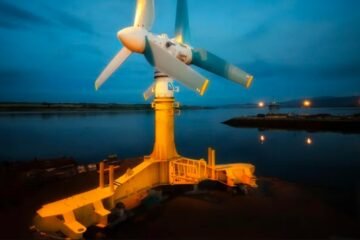Scotland has a rich and diverse aviation heritage, from the early days of flying to the modern era of commercial and military air transport. In this article, we will explore some of the airfields and airports that have had an impact on Scottish history and culture, and how they have transformed the landscape and the lives of Scots.
The origins of Scottish aviation: RAF Drem and RAF East Fortune
Two of the oldest airfields in Scotland are RAF Drem and RAF East Fortune, both located in East Lothian. They were established by the Royal Flying Corps in 1916, before the formation of the Royal Air Force in 1918. RAF Drem was home to No 602 City of Glasgow Squadron, which shot down the first Luftwaffe bombers over Britain in October 1939. RAF East Fortune hosted the launch of the R34 airship, which made the first transatlantic crossing by an airship in 1919. Both airfields were active during the Second World War, and RAF East Fortune later became a tuberculosis sanatorium. Today, RAF Drem is used for industrial and equestrian activities, while RAF East Fortune is the site of the National Museum of Flight, where visitors can see a Concorde, a Vulcan bomber, and a Spitfire.
The rise of commercial aviation: Aberdeen, Sumburgh, and Barra
Commercial aviation in Scotland began in the 1930s, when private entrepreneurs such as Eric Gandar Dower founded their own airlines and aerodromes. Aberdeen Airport at Dyce was one of the first such facilities, opening in 1934 as a base for Aberdeen Airways. The airport was taken over by the RAF during the Second World War, and was bombed several times by the Germans. After the war, Aberdeen Airport became the world’s busiest heliport, serving the North Sea oil industry. Sumburgh Airport on Shetland was another early commercial airport, opening in 1936 as a base for Highland Airways. It was also used by the RAF during the war, and later became a hub for flights to and from the islands. Barra Airport is perhaps the most unique airport in Scotland, as it is located on a beach that is washed by the tides twice a day. It was first used as an airfield in 1933, and has been a tourist attraction ever since.

The expansion of international travel: Glasgow, Edinburgh, and Prestwick
International travel became more accessible and affordable for Scots in the second half of the 20th century, thanks to the development of new airports and airlines. Glasgow Airport at Abbotsinch replaced Renfrew Airport as the city’s main airport in 1966, after being transferred from the Royal Navy to the Air Ministry. The airport has grown steadily since then, becoming Glasgow International Airport and serving millions of passengers each year. Edinburgh Airport at Turnhouse also started as a military airfield, dating back to 1916. It became a civilian airport in 1956, and expanded rapidly after being acquired by the British Airports Authority in 1971. It is now Scotland’s largest airport by passenger numbers, hosting flights to many destinations across Europe and beyond. Prestwick Airport is Scotland’s largest airport by land area, and was built by Scottish Aviation in the 1930s. It was used by the US military during the war, and became famous as the only place in Britain where Elvis Presley set foot in 1960. It also hosted the first transatlantic flight by Concorde in 1975.
The future of Scottish aviation: Edzell, Macrihanish, and beyond
The future of Scottish aviation is uncertain, as some airports and airfields face challenges such as environmental concerns, economic pressures, and political disputes. Some former military airfields have been abandoned or redeveloped, such as RAF Edzell in Angus, which closed in 1997 after being used as an electronic monitoring station by the Americans during the Cold War. Others have found new uses or are still operational, such as RAF Macrihanish in Campbeltown, which was a secret airbase with strategic importance for various allies from 1918 to 2012. It is now Campbeltown Airport, serving commercial flights to Glasgow. Scotland also has a legacy of aircraft manufacturing, with companies such as Rolls-Royce, Beardmore, Blackburn, and Scottish Aviation producing engines and planes that were vital for defence and transport.
What will be the next chapter in Scotland’s aviation heritage? Will new technologies such as drones and electric planes change the way we fly? Will new routes and destinations open up or close down? Will Scotland have more or less control over its airspace and airports? These are some of the questions that may shape the future of Scottish aviation.


















